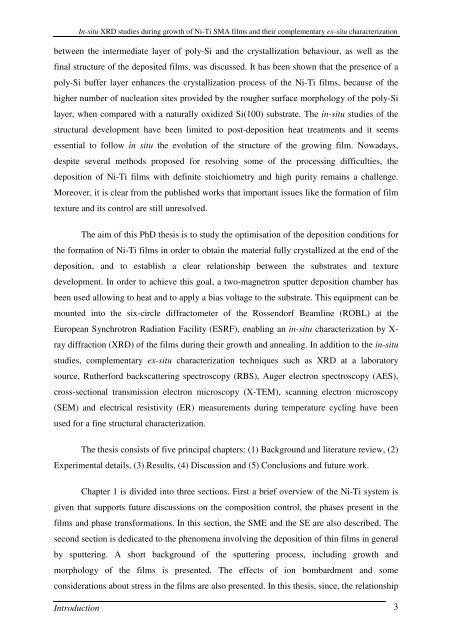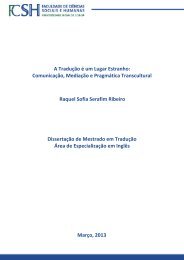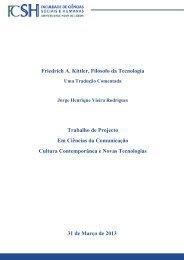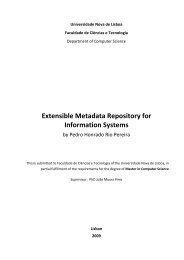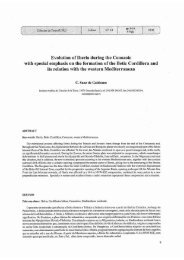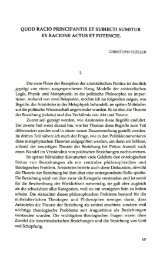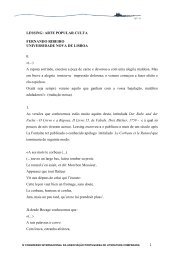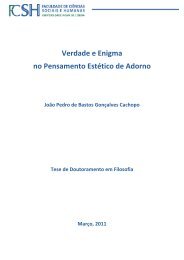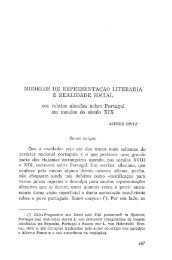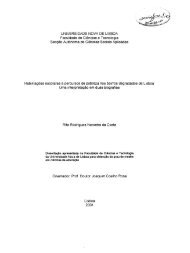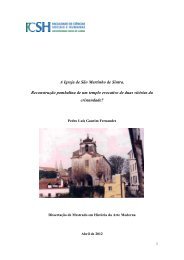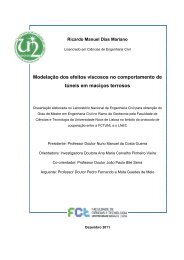PhD Thesis_RuiMSMartins.pdf - RUN UNL
PhD Thesis_RuiMSMartins.pdf - RUN UNL
PhD Thesis_RuiMSMartins.pdf - RUN UNL
Create successful ePaper yourself
Turn your PDF publications into a flip-book with our unique Google optimized e-Paper software.
In-situ XRD studies during growth of Ni-Ti SMA films and their complementary ex-situ characterization<br />
between the intermediate layer of poly-Si and the crystallization behaviour, as well as the<br />
final structure of the deposited films, was discussed. It has been shown that the presence of a<br />
poly-Si buffer layer enhances the crystallization process of the Ni-Ti films, because of the<br />
higher number of nucleation sites provided by the rougher surface morphology of the poly-Si<br />
layer, when compared with a naturally oxidized Si(100) substrate. The in-situ studies of the<br />
structural development have been limited to post-deposition heat treatments and it seems<br />
essential to follow in situ the evolution of the structure of the growing film. Nowadays,<br />
despite several methods proposed for resolving some of the processing difficulties, the<br />
deposition of Ni-Ti films with definite stoichiometry and high purity remains a challenge.<br />
Moreover, it is clear from the published works that important issues like the formation of film<br />
texture and its control are still unresolved.<br />
The aim of this <strong>PhD</strong> thesis is to study the optimisation of the deposition conditions for<br />
the formation of Ni-Ti films in order to obtain the material fully crystallized at the end of the<br />
deposition, and to establish a clear relationship between the substrates and texture<br />
development. In order to achieve this goal, a two-magnetron sputter deposition chamber has<br />
been used allowing to heat and to apply a bias voltage to the substrate. This equipment can be<br />
mounted into the six-circle diffractometer of the Rossendorf Beamline (ROBL) at the<br />
European Synchrotron Radiation Facility (ESRF), enabling an in-situ characterization by X-<br />
ray diffraction (XRD) of the films during their growth and annealing. In addition to the in-situ<br />
studies, complementary ex-situ characterization techniques such as XRD at a laboratory<br />
source, Rutherford backscattering spectroscopy (RBS), Auger electron spectroscopy (AES),<br />
cross-sectional transmission electron microscopy (X-TEM), scanning electron microscopy<br />
(SEM) and electrical resistivity (ER) measurements during temperature cycling have been<br />
used for a fine structural characterization.<br />
The thesis consists of five principal chapters: (1) Background and literature review, (2)<br />
Experimental details, (3) Results, (4) Discussion and (5) Conclusions and future work.<br />
Chapter 1 is divided into three sections. First a brief overview of the Ni-Ti system is<br />
given that supports future discussions on the composition control, the phases present in the<br />
films and phase transformations. In this section, the SME and the SE are also described. The<br />
second section is dedicated to the phenomena involving the deposition of thin films in general<br />
by sputtering. A short background of the sputtering process, including growth and<br />
morphology of the films is presented. The effects of ion bombardment and some<br />
considerations about stress in the films are also presented. In this thesis, since, the relationship<br />
Introduction 3


